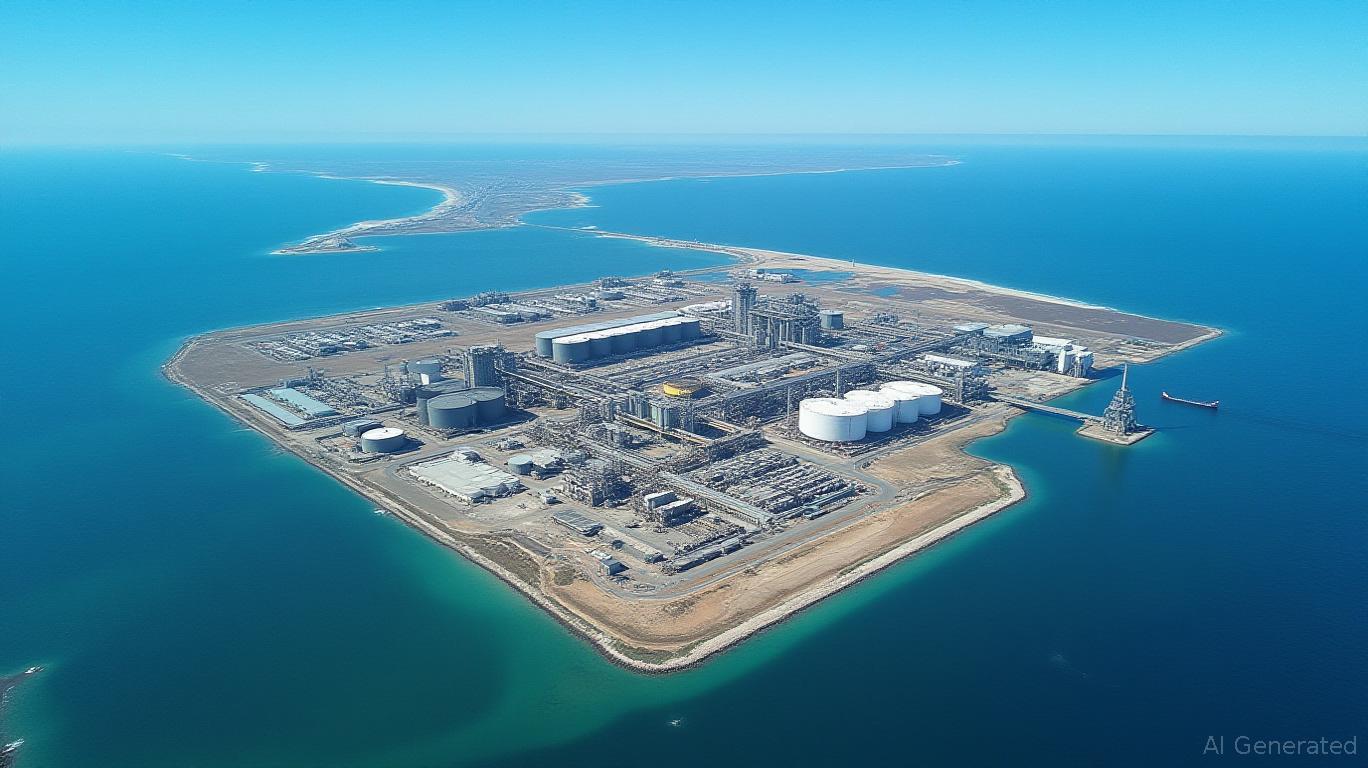The ADNOC-Santos Deal: Navigating Regulatory Hurdles to Secure LNG's Future
The A$18.7 billion bid by the Abu Dhabi National Oil Company (ADNOC)-led consortium for Santos, Australia's largest oil and gas producer, has positioned LNG at the center of a high-stakes strategic and regulatory battle. As Asia's energy demands surge—driven by AI infrastructure, data centers, and a gradual shift toward cleaner fuels—the deal hinges on two critical factors: the approval of Australia's Foreign Investment Review Board (FIRB) and the enduring value of Santos' LNG assets. For investors, the question is whether the risks outweigh the rewards of a transaction that could reshape global gas markets.
Ask Aime: How will ADNOC's acquisition of Santos impact the global LNG market?

The Strategic Case for LNG: Santos' Crown Jewels
Santos' LNG portfolio is the linchpin of ADNOC's bid. The company holds a 20% stake in the Gladstone LNG project, a $18 billion terminal with a capacity of 7.4 million tons per year, and operates vast coal seam gas reserves in Queensland. These assets are critical to ADNOC's ambition to become a LNG powerhouse. With global data center energy consumption expected to grow at a 30% annual clip, LNG—positioned as a cleaner “bridge fuel”—is set to meet Asia's dual needs for both reliable power and carbon reduction.
Ask Aime: Is the ADNOC-led consortium's bid for Santos a wise move amid Asia's surging energy demand?
Santos' proved and probable gas reserves (1.5 Tcf and 2.1 Tcf respectively) further bolster its appeal. ADNOC's consortium, which includes private equity firm Carlyle Group, aims to combine these reserves with its own resources to create a $80 billion energy giant under the XRG umbrella. The 28% premium over Santos' June closing price signals confidence in LNG's long-term prospects, even as the bid's non-binding status leaves room for skepticism.
Regulatory Risks: FIRB's Balancing Act
The deal's fate rests with FIRB, which must weigh national security concerns against economic benefits. ADNOC's state-owned status—Abu Dhabi's sovereign wealth fund owns 70% of the company—could invite scrutiny, particularly over control of critical infrastructure. However, historical precedents suggest FIRB is pragmatic: it approved similar bids, such as Cnooc's 2012 takeover of Nexen, when economic gains outweighed geopolitical risks.
Yet the Santos bid faces unique challenges. Unlike Nexen, which was a North American-focused firm, Santos is a pillar of Australia's LNG exports, accounting for 25% of the country's LNG production. A foreign-owned Santos could raise questions about energy sovereignty, especially as Australia seeks to diversify its energy diplomacy beyond traditional partners.
The LNG Price Conundrum: Volatility and Value
While LNG demand is surging, prices remain hostage to geopolitical winds. The bid's success assumes Santos' assets will generate returns sufficient to justify the premium. But predictive models suggest Santos' share price could plummet to A$4.196 by mid-2026—a stark contrast to the current offer of A$8.89—if LNG prices weaken. This divergence highlights the bid's timing risk: ADNOC is betting on sustained demand, but investors must ask whether the premium overvalues Santos in a volatile market.
Compounding uncertainty is the specter of competing bids. Woodside Energy and Saudi Aramco have previously shown interest in Santos, and either could re-enter if the ADNOC bid falters. A bidding war could lift Santos' valuation further, but it also risks inflating the price beyond what LNG fundamentals justify.
Investment Considerations: Proceed with Caution
For investors, the ADNOC-Santos deal presents a binary outcome. If approved, the premium offers immediate upside, while the LNG tailwinds could drive long-term value. However, a rejection or delayed approval would likely send Santos' shares plummeting toward the A$4.20 forecast.
Recommendation:
- Hold for now: The 28% premium is compelling, but wait until the bid becomes binding and FIRB's stance clarifies.
- Consider a partial position: Allocate a modest stake if you believe LNG demand will outpace supply constraints, but avoid overcommitting to Santos alone.
- Monitor competitors: A rival bid could trigger volatility, offering entry or exit opportunities.
Conclusion
The ADNOC-Santos deal is a litmus test for LNG's role in the energy transition and a referendum on foreign investment in critical infrastructure. While the strategic logic is sound, regulatory and market risks demand patience. Investors should treat the bid as a potential catalyst but anchor decisions to LNG's price trajectory and regulatory clarity. In the end, the deal's success will depend not just on gas reserves, but on whether political and economic forces align to greenlight a new era for global LNG.

Comments
No comments yet